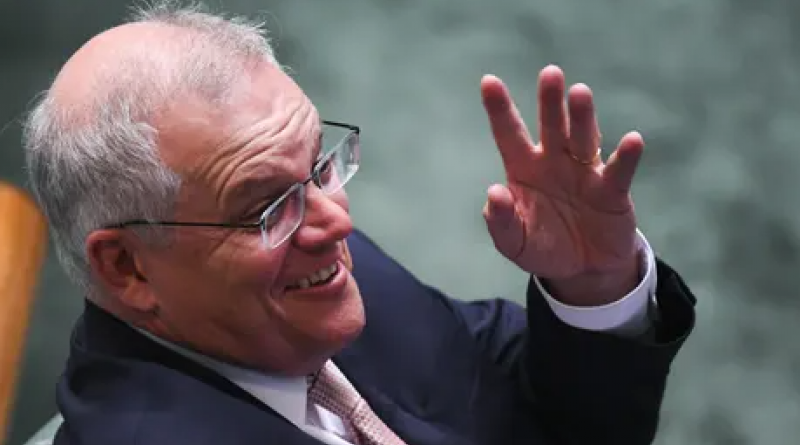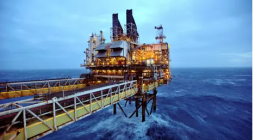We’ve spent a year waiting for this 2050 climate plan and it’s actually just the status quo with some new speculative graphs

To change course radically, the Coalition would have to admit that for a decade it traded the national interest for a handful of regional Queensland seats.
There’s not a lot of good news, so for the sake of all our sanity, let’s start with the good news. The Morrison government has adopted a mid-century target of net zero emissions by 2050.
Now before anyone starts yelling – it is true that Australia already adopted that objective, more or less, when we signed the Paris agreement five years ago.
It is also true that the international climate conference Scott Morrison is about to attend in Glasgow is focused on 2030, not 2050, because the threat of global heating is urgent.
Net zero is, in fact, the bare minimum required for Australia to have any international credibility. But Morrison has landed a target that points Australia’s carbon-intensive economy tentatively in the direction of a necessary transition – and that really is a start. It would be churlish to say otherwise.
But sadly, that’s where our good news begins and ends. Morrison’s so-called mid-century plan has very little substantive content.
It really is extraordinary that we could spend the best part of a year tracking towards Tuesday’s pre-Glasgow crescendo – and land with a “plan” that is actually the status quo with some new speculative graphs.
But that’s exactly where we are. After the Coalition’s disgraceful, destructive decade – measured substantively, looking at proposed actions, not slogans – the government is still running to stay still, without any obvious remorse, introspection, or regret.
Let’s consider Tuesday’s omissions.
We weren’t told how much Morrison’s grand bargain with the Nationals will cost the country, either in dollars or in delayed ambition. On the dollars, perhaps we’ll find out in the budget next year – assuming there is one before the election. Perhaps we won’t. No biggie, right?
Could we please see the modelling underpinning the whole exercise? “Eventually,” the prime minister said, which schedules a release sometime between now and never.
According to the government’s materials, nearly half the abatement to be undertaken between now and 2050 will be delivered by “global technology trends”, “further technology breakthroughs” and international and domestic offsets. How international offsets will work isn’t very clear – although the mystery involves the Indo-Pacific.
The concept the prime minister unfurled in the Blue Room at Parliament House on Tuesday was a whole-of-economy transition achieved by technology magic (with a safety valve of carbon offsets in the event that tech is not quite as magical as hoped).
Australia’s net zero strategy will be delivered by … wait for it … existing policy.
The Morrison government is inviting us to believe that Australia can get to net zero without having to contemplate any more ambition in emissions reductions over the short and the medium term – even though their own projections say we are likely to over-achieve on the current 2030 target.
Bear in mind that global heating is an urgent problem. The planet is on the line. The future comforts, opportunities and prosperity of our kids are at stake.
But Australia remains mired in the world of voluntary action, of carrots not sticks, not because that is the right thing to do, but because the Coalition remains a prisoner of its own weaponised nonsense, and it won’t give up the nonsense entirely until it is certain that telling the truth won’t cost it an election.
To give him due credit, Morrison is starting to decouple his political movement from the lies – the $100 lamb roasts and the Whyalla wipeout. The crushing narrative of cost and delay is slowly morphing in the direction of inexorability and opportunity.
But if the Coalition were to change course radically, it would be tantamount to an admission that a party of government in this country has traded the national interest for a handful of regional Queensland seats for the best part of a decade.
So we are asked to amble in the direction of this transition, whistling quietly to ourselves.
Morrison suggests that we don’t have to worry, or hurry, (the technical parlance for don’t worry, be happy is “emissions reductions won’t be linear”) because nobody knew about the iPhone before it turned up in JB Hi-Fi. But now we’ve all got iPhones, and gadgets are much cheaper than they were five years ago, and everyone likes cheap stuff, so we can hang tight for the new cheap stuff because it always arrives.
As comforting as this homily about entrepreneurship is, stuff would arrive a whole lot quicker if Australia had not only emissions reductions targets, but serious policy mechanisms driving a transition.
The Coalition’s emissions reduction fund and the safeguard mechanism don’t just need a tidy-up. They need a bomb put under them. Truth is Morrison’s targets, and the policy mechanisms to deliver those objectives, don’t align.
One last point. The government claims its core climate policy strategy is “technology not taxes”. This is bunkum.
Consider these basic facts. $20bn worth of revenue (raised by taxes last time I looked) is committed to the Coalition’s “technology” strategy: $1bn for research, $3bn for development and demonstration, and $16bn for pre-commercial deployment and commercialisation.
Revenue (raised by taxes last time I looked) will pay for whatever the Nationals gouged out of Morrison on the road to net zero. Your taxes are paying for the government’s technology strategy.
There are certainly alternatives to this approach. A market mechanism (as opposed to a gigantic taxpayer-funded industry policy, which is what this is) would transfer those costs predominantly on to polluters.
So however this transition goes – however long it takes, by whatever means, measured in time, or money, or opportunity cost, or anxiety, frustration or disappointment, measured in rage against the cynicism of these leaders who determine our futures – understand this. The person paying is you.
26 October 2021
The Guardian




